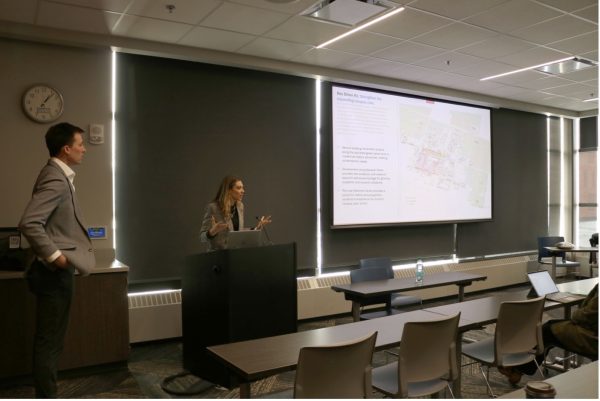SDSU and DSU become national leaders with new collaborative CyberAg program
March 22, 2022
A bill signed earlier this month by Gov. Kristi Noem will help create a precision agriculture cybersecurity partnership between South Dakota State University and Dakota State University.
House Bill 1092 was signed March 10 and provides $1.25 million “for the purposes of creating the precision agriculture cybersecurity CyberAg partnership…”.
The bill was created by John Killefer, dean of Agriculture, Food and Environmental Sciences at SDSU, and Richard Hanson, DSU’s former dean of computer sciences and current interim provost-vice president of academic affairs. Rep. Larry Tidemann from District 7 was the prime sponsor.
Blake Pulse, Students’ Association chief of staff, testified in favor of the bill. He said the “partnership will implement two cutting edge programs.”
Killefer said: “It’s a natural collaboration between the two institutions and the two programs. The data would be generated by the precision technologies here at SDSU, with the collaboration with the cybersecurity program at DSU.”
Hanson said: “The partnership between SDSU and DSU is fantastic, highly communicated and collegial. And obviously very effective, as we got the job done.”
Killefer said as the agriculture industry advances, it becomes more modernized by using technology. With more technology, the more vulnerable the industry becomes to cyber-attacks. The goal is to prevent attacks from happening.
“By doing this, we are working to protect our number one industry in South Dakota, agriculture,” Tidemann said.
The bill states that institutions will split $1.25 million to create the precision agriculture cybersecurity CyberAg partnership. The money will develop undergraduate and graduate curricula, engage in research and provide associated outreach programming and communication to address agriculture security threats.
At SDSU and DSU, the research will primarily be done by faculty members and graduate students, as undergraduate students work alongside. The students will participate in each step of the process and will have the opportunity to be involved in the leading edge of cybersecurity research, giving the students hands-on experience and networking with industry partners, according to Killefer and Hanson.
After the funds from the state are transferred to each university, the team will start planning to develop conferences, getting everyone together. The conferences will help determine all the problems and plan to solve them.
“(I am) most excited about the opportunity to have a proactive impact on growth and evolution of the agriculture industry in our state, further strengthen our relationship with DSU and do things that will impact our state,” Killefer said.






















